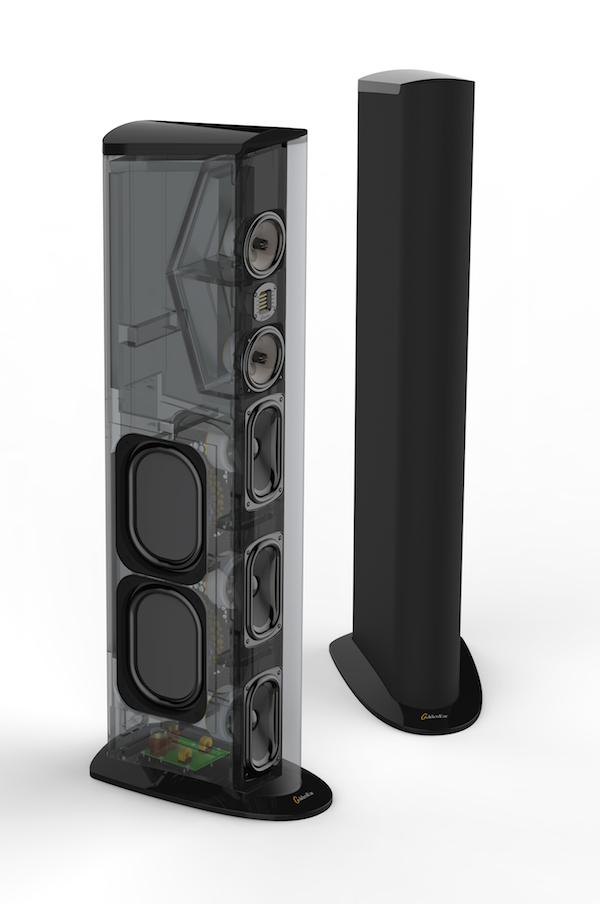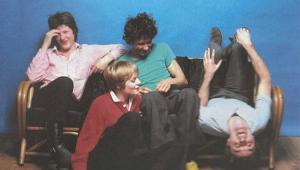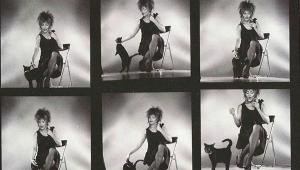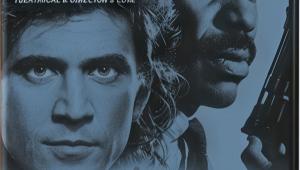GoldenEar Triton One, Revisited

First things first. Rightly or wrongly, I never review a product in a vacuum. (In space, no one can hear your loudspeakers scream…) There is an atmosphere that surrounds a product; and, for a lot of people, taking deep breaths of that air is a significant part of their ownership experience. What is there, for instance, about a book that’s been personally signed by the author compared to a non-signed copy? They both contain the same words and tell the same story, and yet many fans will patiently stand in long lines to get their copy scribbled on by a favorite author. Similarly, the taint of human suffering that is associated with a conflict diamond reduces the gem’s perceived value immensely—even though its chemistry and physical appearance may be identical to a diamond from another part of the world.
Unfortunately, the audio industry’s old, hot and humid atmosphere is being filtered and cooled by big corporation HVACs. Yes, there are many benefits to that, but there are drawbacks, too—most notably the loss of personality. It’s difficult to imagine we’ll hear from too many more eccentric , garage-dwelling audio tinkerers, such as Bob Carver, Matthew Polk, David Hall, Paul Klipsch, Oskar Heil, Ken Kreisel, and, yes, Sandy Gross.
In my opinion, the black grille cloths on the Triton Ones cover more than medite cabinets, drivers, amps, and circuitry. There are also thirty-some years of industry-changing experience hidden behind those grilles. I think that’s an important aspect of the speaker, and that’s why I devoted so much space to the topic. If the speakers had sounded like shit, of course, then the pedigree wouldn’t have mattered. Fortunately, the speakers didn’t sound bad—in fact, they sounded quite the opposite.
Which brings me to the sound quality of the Triton Ones. Some readers thought I didn’t elaborate enough on the overall performance of the speakers. Okay, fair enough. In the limited amount of print space I was allotted, I chose to use more ink explaining why the speaker is important and, perhaps, shortchanged talking about the musicality. I’ll try to make up for that here.
Two aspects of the Triton One stand out. One is the bass response, and that’s the most obvious upgrade in sound quality over the Triton Two. The Triton One goes low, really low; and it’s dynamic as hell. But there’s more to it than that. In addition to doubling the output, another benefit of having a subwoofer in each tower is that the bass response is much more consistent throughout the room. Put the depth, dynamics, and distribution of the bass response together and you get an experience that is amazingly close to a live performance. This was exactly how I felt listening to a high-res version of Steely Dan’s “Cousin Dupree”. The bass line hit hard without having any sense of localization at all. The same can be said about the eclectic “Atashgah, for Cello, Violin, Viola, Double Bass & Percussion” from the Silk Road Ensemble’s A Playlist Without Borders. After about a minute and 40 seconds of careful and precise plucking of cello, violin, and viola strings, the double bass and percussion join in. Sure, the bass was strong and forceful; but, more importantly, it was alive and textured, beautifully reproducing the the resonant decay coming from the cabinet of the double bass after a low note had been hit.
The other aspect of the Triton One that’s truly impressive is the seamless nature of the speaker. The smoothness of the transition from driver to driver is absolutely exceptional. In this case, the performance of the Triton One is much akin to what you hear with a great MartinLogan electrostatic speaker where there is no crossover from a tweeter to a midrange driver. This was especially apparent with the rather raw “Bright Lights, Big City” (Roots) on which Susan Tedeschi joins Johnny Winter. Amidst the electric guitars and other instruments, each voice maintained its distinct character without a shift in emphasis or subtle smearing. The Triton Ones exhibited that same unity on Louise Rogers’ “Black Coffee” (from Black Coffee). Despite the fact that Ms. Rogers is solo on this track, there are two voices clearly present in the song. One, obviously, is hers; but the other is the voice of the acoustic guitar playing to the left. Rogers’ voice is smooth and silky, while the guitar is much more energetic and talkative. There is nothing that gets in the way of the performance.
Seamless performance doesn’t only apply to the transition from the HVFR tweeter to the dual 5.25-inch midrange drivers, though. The Triton Ones are astoundingly consistent as the frequency output crosses the midrange/woofer region. Despite the multiple drivers, the towers sound like a single, coherent entity. Derrick Hodge’s “The Real” (Live Today) is all over the place, both in sound and soundstage, yet the woofers never lag behind or seem emphasized at times or a little weak at others. If you didn’t know that it’s physically impossible, you’d think that all the bass was coming from the two midrange drivers—that’s how tightly integrated the sound is. That kind of blending is extremely difficult to achieve in a listening room with a pair of speakers and a single powered subwoofer—or a pair of subwoofers.
So this is why I believe the Triton Ones are such a wonderful achievement—one that clearly required years of work and experience of successes and failures to bring about. The Triton Ones combine the best aspects of an electrostatic or other type of large, planar-type speaker with the bass output of much more massive, traditional cone woofer speaker cabinets in a much more room-friendly package. The sound is a singular sensation—each Triton One performs as a single entity with such dynamism that they can fool you into thinking you’re listening to a living, breathing performance.














































